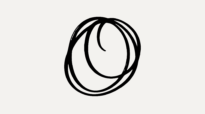RGD | The Hub for Graphic Design
Spotlight
Trending
Latest
Available for 12 days
Liza Enebeis


Featured
Available for 12 days
Presented at DesignThinkers 2023 in Vancouver
Upcoming events
Certification
Virtual
Wednesday May 08 @ 2 pm ET
Virtual Community
Virtual
Wednesday May 08 @ 12 pm ET
virtual
Friday May 10 @ 12 pm ET
Certification
Virtual
Monday May 13 @ 7 pm ET














